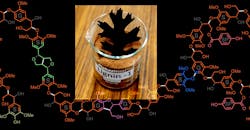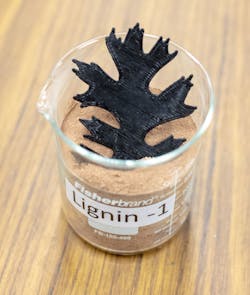Lignin-based Composite: A Renewable 3D Printing Feedstock
Scientists at the Department of Energy’s Oak Ridge National Laboratory have created a recipe for a renewable 3D printing feedstock that could spur a profitable new use for lignin, the fiber that gives plants rigidity and makes biomass difficult to breakdown into useful products.
“Finding new uses for lignin can improve the economics of the entire biorefining process,” says ORNL project lead Amit Naskar.
Researchers combined a melt-stable hardwood lignin with conventional plastic, a low-melting nylon, and carbon fiber to create a composite with just the right characteristics for extrusion and weld strength between layers during the 3D printing, as well as excellent mechanical properties.
The work is tricky. Lignin chars easily and can only be heated to a certain temperature for softening and extrusion from 3D-printing nozzles. Prolonged exposure to heat dramatically increases its viscosity, making it too thick to be extruded easily.
A new composite material created at ORNL uses as much as 50% lignin, a biofuel byproduct by weight, and is well-suited for use in 3D printing.
But when the researchers combined lignin with nylon, they found the composite’s room temperature stiffness increased while its melt viscosity decreased. The lignin-nylon material had tensile strength similar to nylon alone and lower viscosity than conventional ABS or high impact polystyrene.
The scientists conducted neutron scattering and advanced microscopy to explore the composite’s molecular structure. They found that combining lignin and nylon appeared to have almost a lubricating or plasticizing effect on the composite.
Scientists were also able to mix in a higher percentage of lignin—40 to 50% by weight—a record in the quest for lignin-based printing materials. ORNL scientists then added 4 to 16% carbon fiber into the mix. The new composite heats up more easily, flows faster for speedier printing, and results in a stronger printed object.
The lignin-nylon composite is patent-pending; work is ongoing to refine the material and find other ways to process it.


